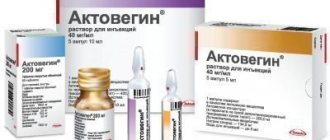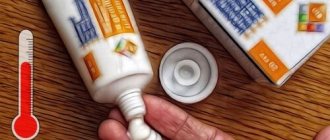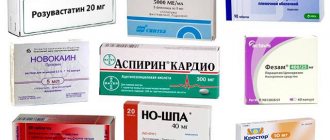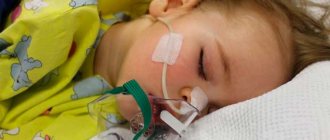Treatment of neuralgia at home aimed at eliminating pain and inflammation. It is carried out using medications, physiotherapeutic methods and folk remedies. Before starting it, you need to consult with a specialist and get a reliable diagnosis, because the symptoms of neuralgia may be characteristic of other diseases, and treatment in this case may be harmful.
Causes
There are many reasons for the occurrence of intercostal neuralgia, but the essence of them all comes down to two:
- irritation or pinching of the intercostal nerve in the intercostal space;
- pinching of the spinal nerve root in the thoracic spine.
Pinched roots usually occur against the background of spinal diseases such as thoracic osteochondrosis, ankylosing spondylitis (Bechterew's disease), spondylitis, intervertebral hernia, progressive kyphosis and others.
Most cases of intercostal neuralgia are the result of irritation or pinching of the nerve by fibers of the intercostal muscles in the intercostal space. Muscle spasms can occur due to traumatic injury, increased physical activity without warming up, or psycho-emotional stress. Inflammation of the external and internal intercostal muscles and the associated spasm occur against the background of general or local hypothermia, infectious diseases (in particular, herpes).
Less commonly, intercostal neuralgia can develop against the background of the following diseases:
- food poisoning (acute gastroenteritis);
- spondylopathies;
- diseases of the ribs and chest deformities;
- multiple sclerosis;
- allergic diseases;
- toxic (alcoholic) polyneuropathy;
- diabetes;
- diseases of the digestive tract that cause a deficiency of B vitamins in the body (chronic gastritis, colitis, hepatitis, peptic ulcer of the stomach and duodenum);
- thoracic aortic aneurysm.
Microtraumas caused by regular excessive physical activity, especially in combination with hypothermia, can also lead to intercostal neuralgia.
Preventing neuralgia at home
If you have a tendency to this disease, then by following a few simple recommendations, you can protect yourself from it for a long time:
- Constantly maintain the required level of B vitamins in the body;
- Make sure there are no drafts and dress warmly;
- Do exercises, exercise, do not lead a sedentary lifestyle;
- For the slightest discomfort, use warming ointments;
- Harden up.
Neuralgia is a disease of the nervous system, so in a state of severe stress the chances of its occurrence increase sharply.
Try to lead a measured and calm lifestyle, without overworking or placing excessive stress on yourself.
Symptoms
In adults, the main symptom of intercostal neuralgia is pain. Moreover, there is always an immediate acute pain. Nerve inflammation can take you by surprise because it can appear suddenly. A person begins to experience severe discomfort, it becomes difficult for him to perform everyday duties.
The pain may intensify with emotional conversation, coughing, or turning the body. Even in a state of rest, a person does not feel better. High pain intensity may persist for 4-7 days. The skin in the area where the irritated nerve is located usually loses sensitivity. But if you feel the affected area, the pain can sharply intensify.
Secondary symptoms of intercostal neuralgia may be:
- pallor of the skin or, conversely, redness;
- increased sweating;
- involuntary muscle contraction;
- loss of consciousness (possible with a low pain threshold in some people).
Most often, pain occurs in the chest and spreads along the ribs. Depending on the root cause of intercostal neuralgia, pain can spread beyond the chest, and this misleads the doctor in making the correct diagnosis. Inflammation of the nerve in the intercostal space provokes pain from all sides. In addition, the pain can spread beyond the affected area: to the lower back, back, shoulder blades.
How does heart pain differ from neuralgia pain? Pain with intercostal neuralgia is constant, intensifying when turning the body, bending, taking a deep breath, sneezing, coughing, or palpating the ribs and the spaces between them. With ischemic heart disease (angina), the pain is clearly related to the load (occurs during physical activity and goes away after it stops) and is not stabbing, but squeezing (less often pressing) in nature. The pain occurs sharply and goes away quickly, especially when taking nitroglycerin; pain in the heart does not intensify when changing position or taking a deep breath; most often, heart pain is accompanied by a change in blood pressure (decrease or increase) and a disturbance in the rhythm of the pulse.
Intercostal neuralgia on the left side
With intercostal neuralgia on the left, symptoms also manifest themselves in the form of intense pain, the nature of which varies depending on the factor of its manifestation. However, with such a lesion, unpleasant sensations radiate to the heart area, so thoracalgia is often mistaken for signs of myocardial infarction.
The development of left-sided intercostal neuralgia in men and women is accompanied by different symptoms. In women, the pain syndrome affects the mammary glands, and attacks in men pass faster.
The localization of pain with intercostal neuralgia on the left side depends on the number of affected nerves. In some cases, the unpleasant sensations become overwhelming.
Diagnostics
The primary diagnosis of intercostal neuralgia is carried out on the basis of complaints and anamnesis, as well as an objective examination of the patient. Often the data obtained is sufficient to diagnose the disease. In complex diagnostic cases, as well as for the purpose of differential diagnosis with other pathologies that have similar manifestations, an additional examination is carried out, which, depending on the indications, includes:
- magnetic resonance and computed tomography (to exclude neoplasms, hernia);
- X-ray examination of the chest and spine in direct, lateral and oblique projections;
- electroneurography (if the consequences of injuries are suspected);
- electrocardiography (to exclude diseases of the cardiovascular system);
- ultrasonography;
- contrasting discography;
- gastroscopy (to exclude pathologies of the gastrointestinal tract);
- general and biochemical blood test;
- general urine analysis;
- serological blood test; etc.
The information content of computed tomography increases when performed in conjunction with an X-ray contrast examination of the spinal cord cerebrospinal fluid tract (myelography).
In some cases, intercostal neuralgia indicates the presence of other diseases, for example, neoplasms of the spinal cord or chest organs, pleurisy.
It is possible to identify pathology at an early stage, as well as monitor the effectiveness of treatment using electrospondylography. The method allows you to assess the condition of the spine and determine the extent of damage.
Differential diagnosis of intercostal neuralgia with other diseases is necessary:
- cardiovascular pathologies (angina pectoris, coronary heart disease, myocardial infarction);
- intervertebral hernia;
- thoracic radiculitis;
- pleurisy;
- lung cancer and other chest tumors;
- diseases of the gastrointestinal tract (gastritis, acute pancreatitis, gastric ulcer);
- atypical pneumonia;
- renal colic; and etc.
Treatment of intercostal neuralgia
The required volume of treatment measures is prescribed after examining the patient and confirming the diagnosis. You should not engage in self-diagnosis, since pain can mask renal colic and heart disease. You should promptly consult a doctor who can prescribe an x-ray of the lungs, an ECG, or an ultrasound of the abdominal organs.
If the cause of the disease is infringement of the roots of the spinal nerves, then neuralgia can only be dealt with by treating the pathology that led to the infringement - osteochondrosis, herniated formation of the intervertebral disc, etc. Specific drug therapy is prescribed - non-steroidal and steroid painkillers (including in the form of epidurals) injections), muscle relaxants, therapeutic massage and gymnastics, manual therapy. In severe cases, traction of the spinal column or surgical correction of identified pathologies is prescribed.
For viral etiology of neuralgia (herpes zoster, ARVI), specific antiviral treatment is prescribed using immunostimulating therapy and sedatives.
Drug therapy
First of all, the specialist will help the patient reduce the pain of intercostal nerve entrapment and may prescribe the following medications.
- Non-steroidal anti-inflammatory drugs (Diclofenac, Meloxicam), they will relieve pain and have a direct effect on the inflammatory process in the body. These products have several dosage forms: injection solutions, tablets, ointments, suppositories.
- Muscle relaxants (Sirdalur, Tolperil), which reduce the severity of spasm of muscle fibers.
- Sedatives based on herbal components (Sedasen, Persen, Novo-Passit).
- B vitamins (Neurobion, Neurorubin). Vitamin B restores damaged nerve structures and improves the passage of impulses through them.
- Painkillers. Ointments based on bee and snake venoms have a good effect: Apizartron, Viprosal.
Massage and manual therapy
In addition to drug treatment at home, other methods are used for intercostal neuralgia:
| Method | Description |
| Massage | The impact should be carried out using gentle massage movements without excessive pressure on the muscles. For massage, it is advisable to use products with a warming effect. They will help relax the muscles and release the compressed intercostal nerve |
| Acupressure | The effect is carried out using pressure on certain points associated with the diseased area by bioenergetic mechanisms. This technique causes improvement by mobilizing the body’s own protective reserves |
| Acupuncture | By applying pressure to specific points, the acupuncturist stimulates mechanisms that help eliminate muscle imbalances in the deep layers of the back muscles |
| Manual therapy | This technique should be used after the end of the acute period. The essence of the method is to eliminate the displacement of the vertebrae by returning each of them to its place. After returning the spinal column to its original state, the size of the intervertebral foramina is normalized and the pathological effect on the nerve root is eliminated |
How to treat at home
In order to choose the right treatment, you need to consult a specialist and also analyze the possible causes of neuralgia. Treatment tactics will completely depend on them. The causes are classified depending on the location of the pathological process.
So, the most common causes of the development of neuralgia:
For neuralgia of the spinal and sciatic nerve:
- Pregnancy with a large fetus or large weight gain during gestation, when tissues and an enlarged uterus compress the nervous tissue of the pelvis and the spine;
- Infections of the female genital organs and excretory system, hypothermia;
- Large loads on the lumbar muscles;
- Sedentary lifestyle;
- Obesity;
- Osteochondrosis and intervertebral hernia;
- Fractures of the pelvic bones and spine;
- Tumors in the pelvis and spine.
For occipital neuralgia:
- Hypothermia of the head;
- Gout;
- Traumatic brain injuries;
- Tumors of the brain and in the cervical spine;
- Osteochondrosis of the cervical-collar area.
For neuralgia of the facial nerve:
- Aneurysm of the cerebral arteries (manifests in the form of deformation of the arteries and slowing of blood flow through them);
- Atherosclerosis of cerebral vessels;
- Brain tumors (benign and malignant);
- Chronic infections (sinusitis, sinusitis, etc.).
For neuralgia of the glossopharyngeal nerve:
- Colds and infectious diseases (flu, tuberculosis, etc.);
- Allergies;
- Intoxication;
- Metabolic diseases (obesity, thyroid disorders);
- Diabetes;
- Alcohol intoxication;
- Sclerosis.
To cure neuralgia, it is not necessary to go to the hospital (unless we are talking about severe forms of the disease).
At home, with a correct diagnosis, you can carry out all available treatment methods and get good results.
Neuralgia therapy consists of three areas:
- Therapeutic and protective measures - measures to eliminate muscle spasms and reduce pain;
- Drug therapy - relieving tissue swelling, eliminating pain and the causes of inflammation;
- Folk remedies are used for a long time, their action is aimed at deeply eliminating the cause of neuralgia and relieving internal inflammation of nerve tissue.
You cannot diagnose neuralgia on your own, even if you have already had this disease before. Its symptoms are not specific, they may indicate the presence of another problem, and only a doctor can tell which one.
The main objectives of the treatment (depending on the cause of the disease) will be:
- Elimination of pain;
- Removing tissue swelling;
- Elimination of muscle spasm and other factors that put pressure on the nerve;
- Prevention of relapses.
But before you start treating neuralgia at home, you need to familiarize yourself with a number of contraindications so as not to harm the body with the methods used.
Several folk recipes
Pain relief is only the first stage in the treatment of intercostal neuralgia at home. To obtain a stable result and guarantee against the return of attacks, a long course of treatment is required. This can be done using folk remedies, but only if the doctor has confirmed the diagnosis.
If the patient is not sure of the origin of the pain, the use of any means can be harmful. In addition, time will be lost to begin proper treatment. The main problem in using folk remedies is the duration of the course. It is necessary to continue the procedures for a long time; stopping halfway will not bring results, and may even worsen the condition.
List of popular folk remedies that are used at home:
- Geranium leaves – Take a few leaves of the plant and place it on a linen towel, then cover the localized pain. For convenience, wrap a bandage over the towel and put on something warm to completely warm it up. The pain subsides gradually over 2-3 hours. The compress is used at least 2 times a day.
- A chicken egg is boiled hard and while it is hot, applied to the site of localization of intercostal neuralgia. As the egg cools, the painful effects will subside.
- Willow bark - Healing bark that can help eliminate intercostal neuralgia. Finely crushed bark is placed in an iron container and poured with boiling water (250 ml). Then the iron container is placed on the stove and boiled over low heat for 15-20 minutes. Then remove and let cool. Once it cools down, you need to strain it and take 20 ml - 4 times a day.
- Thyme-based tincture – Thyme can eliminate painful symptoms of the disease. 10 grams of the plant are poured with 100 ml of alcohol and left for infusion for a day. Afterwards, the contents are filtered and taken 3 times a day - 15 drops.
- Uses of horseradish - To do this, collect its leaves, finely chop them, and apply them to the right side of the chest, wrap them on top with a warm scarf (preferably wool).
- Garlic oil – About 25 ml of garlic oil is diluted with cognac (500 ml); if there is no cognac, you can use alcohol. The prepared composition is wiped over the temples and forehead. The essence allows you to eliminate pain, realizing the homeopathic syndrome.
- Black radish – The juice of fresh, black radish works well for pain relief. Squeeze the juice out of the vegetable, warm it up a little and apply it to the place where the diseased nerve is located.
- Douching with chamomile - To prepare, you will need the flowers of the plant, pour 4 tablespoons into 1 glass of hot water, and boil for about 10 minutes. The finished decoction is drunk 1/3 of the contents of a glass, 3 times a day after eating.
- Using sage baths – Take 4 tablespoons of sage and pour boiling water (500 ml). Let it brew for a while and pour it into a filled bath. At the end add a handful of sea salt. The bath must be taken every day for 15 minutes.
Treatment methods at home
Treatment methods for neuralgia at home are based on the use of medications , folk remedies and massage. As a rule, they begin with therapeutic and protective measures that help the patient stop the development of the disease and protect himself from severe pain.
And after all the necessary measures to stop the progression of the disease have been taken, they move on to drug therapy and treatment of neuralgia with folk remedies.
Therapeutic and protective regime
Since the main complaints of patients suffering from neuralgia are severe pain , first of all it is necessary to do everything to prevent them from occurring. To do this, you need to exclude situations that may cause excessive strain on the muscles at the site of the lesion. In addition, you should temporarily limit yourself from sudden and active movements and observe bed rest for some time.
Article on the topic: Let's look at what injections are given in the knee joint
Let's consider situations in which the body's muscles experience excessive stress:
- Cough - if you have a cold and cough often, then it makes sense to start taking antitussive medications (if the cough is dry). If the cold is in full swing and phlegm comes out when you cough, then only drugs that thin it, promote its rapid elimination, as well as painkillers can help.
- Constipation – try to keep your stool as soft as possible and not cause problems. Eat more laxative foods: prunes, dried apricots, apples, etc.
- Laughter – there are no problems with limitation here.
In addition to these factors, the manifestation of pain during neuralgia is also influenced by the amount of fluid in the body. In the first days of illness, it is better to limit yourself a little and drink no more than a liter per day. The fact is that with an abundant amount of interstitial fluid, the tissues increase in size and create additional pressure on the site of the lesion.
You can also add diuretics to the main treatment; some doctors often prescribe them.
General Tips
As mentioned above, in the first days of illness it is advisable to limit your physical activity and go to bed rest. And if there is a need for movement, then do it extremely carefully, without provoking the occurrence of pain.
It is necessary to sleep and lie on a hard surface, preferably an orthopedic mattress. But if it’s not there, then you can simply remove all the pillows and feather beds and get rid of the “softness” as much as possible.
If you have a rigid orthopedic corset at home, then you can wear it all day long (when it comes to intercostal neuralgia).
In the first days of illness, exposure to dry and non-aggressive heat is recommended. It is necessary to relieve muscle spasm and eliminate swelling. Heat improves blood circulation in tissues and promotes accelerated removal of stagnant fluid.
You cannot warm up the heart area - this can negatively affect its functioning.
As a source of heat, you can use heating pads, bags of dry heated salt, bottles of hot water, etc. Try to cover the entire area of the affected areas to completely eliminate the spasm. After the procedure, it is better to lie under a blanket or put on a warm sweater for some time so that the resulting effect does not dissipate. You can additionally lubricate the heated area with special ointments.
If the problem is in the neck area and is caused by osteochondrosis, then heat should be applied along the entire length of the spine.
Medicines
Taking medications is necessary to eliminate pain, relieve inflammation and nourish nerve tissue. The following groups of drugs are used:
- analgesics;
- NSAIDs (non-steroidal anti-inflammatory drugs);
- muscle relaxants;
- B vitamins;
- ointments and plasters.
Painkillers
Conventional painkillers and NSAIDs, which have an additional anti-inflammatory effect, can be used as painkillers. Among them, the most often prescribed are:
"Analgin", "Baralgin" and other analogues of metamizole sodium. This is the active ingredient of the above drugs; it acts on the receptors responsible for the pain impulse, dulling their sensitivity. Contraindications: kidney and liver dysfunction, lack of the enzyme glucose-6-phosphate dehydrogenase, blood diseases, allergies to pyrazolone derivatives. Price from 10 rubles.
Tempalgin is a complex drug that has a similar analgesic effect. Contraindications: liver, kidney and heart failure in severe forms, hypotension (below 100 units), hematopoietic diseases, glucose-6-phosphate dehydrogenase deficiency, aspirin-induced asthma, age under 14 years, pregnancy, lactation, allergic reactions. Price from 50 rubles.
Diclofenac is a non-steroidal anti-inflammatory drug that blocks inflammatory mediators, has an analgesic, anti-inflammatory and mild antipyretic effect. Contraindications: hypersensitivity to the components of the drug, aspirin “triad” (bronchial asthma, urticaria, rhinitis), erosive gastrointestinal diseases, proctitis, pregnancy, age under 18 years. Price from 50 rubles.
Meloxicam and its analogues are selective NSAIDs that do not have a negative effect on the gastric mucosa. Has anti-inflammatory and analgesic effects. Contraindications: stomach diseases in the acute stage, liver and kidney failure in severe forms, age under 15 years, hypersensitivity to the components of the drug. Price from 70 rubles.
Diuretics
"Diacarb" is a weak but long-acting diuretic that does not affect the balance of potassium ions in the body. Ideal for treating neuralgia. Contraindications: severe renal and liver failure, hypokalemia, hyponatremia, diabetes mellitus, first trimester of pregnancy, Addison's disease, lactation, age under 3 years. Price from 200 rub.
"Veroshpiron" is a diuretic of varying dosages (25 mg, 50 mg, 100 mg), moderate action, prescribed for neuralgia during the first three days. Contraindications: Addison's disease, hypokalemia and hyponatremia, pregnancy, lactation, age under 3 years. Price from 80 rub.
Local painkillers
Anti-inflammatory ointments are used as local anesthetics , such as:
- "Diclofenac";
- "Ibuprofen";
- "Fastum gel";
- "Bystrumgel".
Warming up:
- "Capsicam";
- "Finalgon";
- "Viprosal" etc.
Contraindications for ointments will be: skin hypersensitivity, skin diseases, irritation and allergic reactions.
The price ranges from 50 to 300 rubles. It is also better to coordinate the use of ointment with a specialist.
Injections
Drugs in ampoules are administered intramuscularly and are absorbed much faster. In addition, the medicine is much more effective in solution because it goes directly into the bloodstream, bypassing the liver. For neuralgia, the same drugs are prescribed in injections as in tablets: NSAIDs, analgesics, muscle relaxants. Contraindications will be exactly the same as for drugs produced in tablets. Approximate prices:
- “Diclofenac” – 50 rubles;
- “Combilipen” – 250 rubles;
- “Amelotex” – 300 rubles;
- “Mydocalm” – 600 rubles, etc.
Vitamins
Vitamins in the treatment of neuralgia are necessary to restore the structure of the nerve fiber, as well as to improve the conductivity of the nerve impulse. Complex preparations are prescribed, which include B vitamins (B1, B2, B6, B12) and ascorbic acid:
- “Kombilipen” is a complex drug: B vitamins + ascorbic acid + lidocaine. Contraindications: individual intolerance, severe cardiovascular failure, pregnancy and lactation. Price from 300 rubles.
- Neuromultivit is a drug for people who are allergic to lidocaine. Ingredients: B vitamins + ascorbic acid.
Contraindications: pregnancy, lactation, childhood, acute heart failure. Price from 350 rubles.
Muscle relaxants
Muscle relaxants are drugs that reflexively relax muscles, and, as a result, relieve tension from nervous tissue.
- "Mydocalm" is a centrally acting muscle relaxant. Contraindications: myasthenia gravis, age under 3 years, hypersensitivity to the components of the drug. Price from 350 rubles.
- “Sirdalud” is a centrally acting muscle relaxant that affects the spinal cord, reflexively relaxing the back muscles and others. Contraindications: hypersensitivity to the components of the drug, severe liver failure, simultaneous use with ciprofloxacin, hereditary diseases associated with deficiency of sugar-cleaving enzymes, age under 18 years. Price from 350 rubles.
Article on the topic: We'll tell you how to get rid of headaches at home
Diet and drinking regimen
In the first days of illness, it is recommended to limit fluid intake to 1 liter per day , in subsequent days - no more than 1.5 liters, including soups, tea and other drinks.
Recommendations for nutrition for neuralgia will be the same as for any disease of the nervous system. The following products are strictly prohibited:
- Lard, animal fats;
- Coffee, strong black tea;
- Hot, spicy, smoked;
- Chocolate;
- Cheese (allowed to be consumed in small quantities);
- Soda (Coca-Cola, etc.);
- Hard-boiled eggs;
- Flour products.
All these products have a negative effect on the intensity of blood circulation, which means they inhibit the restoration of nerve fibers, because only through the blood flow do they receive all the necessary nutrients.
It is recommended to consume foods containing B vitamins - they help restore nerve cell membranes and improve nerve conduction. Grocery list:
- Nuts, legumes, soybeans;
- Unsweetened bakery products, rye bread;
- Meat dishes stewed or boiled.
Other products indicated contain Omega-3. This is the main substance that promotes recovery:
- Fish (fatty varieties);
- Milk, fermented milk products;
- Scrambled eggs;
- Cereals: buckwheat, barley, oatmeal;
- Vegetables: tomatoes, zucchini, pumpkin, beets, cabbage, squash.
When dieting, you should remember that it is better to exclude sauces like mayonnaise and fatty sour cream. You can replace them with olive or corn oil.
Folk remedies
The pain syndrome with neuralgia is long-lasting. Painkillers stop helping because the body gets used to the main active substance. This is where traditional traditional medicine treatments come in handy.
willow bark
Used for back and vertebral pain. You need to finely grind the willow bark and pour boiling water over it. After this, simmer over low heat for 20 minutes. Take one tablespoon 3 times a day.
Horseradish rub
The roots and leaves of this plant are used. The recipe is intended for external use and helps to numb the affected area.
The root is grated, the pulp is applied to the sore spot and covered with polyethylene on top, then wrapped in a warm shawl. You need to hold the horseradish until you feel an unbearable burning sensation. It is recommended to make compresses throughout the week.
The leaves are used whole and applied to the affected area as a compress.
Black radish
Grind the vegetable into a paste and apply it to the sore nerves as a compress. Once a day is enough. The duration of the course is two weeks.
Iodine and glycerin
The substances are mixed in a 1:1 ratio and placed in a container with opaque walls or dark glass. The mixture is thoroughly mixed until smooth and applied with cotton wool to the affected areas. It is better to go around the spine area.
Iodine has a strong warming effect and relieves pain, glycerin promotes improved penetration into tissues.
The procedure is done before bedtime to avoid drafts and hypothermia.
Therapeutic baths for neuralgia
There are several types of baths for neuralgia:
- Baths from aspen and poplar (branches are boiled for 20 minutes in a large saucepan, and the broth is poured into the bath while hot). After the procedure, it is recommended to lubricate the affected area with fir oil and wrap it in warm material.
- Bath based on medicinal herbs and sea salt. Among the herbs, sage is most often used - it has an anti-inflammatory effect. The herb is boiled and the broth is poured into a bath of sea salt. After the procedure, it is also recommended to wrap yourself as warmly as possible.
- Baths with essential oils. Most often they are prepared using lavender oil. It is first mixed with milk, and the suspension is poured into the bath. After this procedure, it is recommended not to wash off the residue in the shower, but to lightly wipe with a towel.
In the presence of inflammation, baths for neuralgia will be one of the most effective and harmless treatments.
They can be done without the appointment of a specialist.
Applicators
Applicators are devices for improving blood circulation in tissues. They are a piece of fabric or a special pad with pointed plastic parts. By irritating the surface of the skin, they stimulate blood flow and help relieve deep muscle spasms. They are used daily: a person lies on the applicator and lies for about 15-20 minutes without a break. It is desirable that there is a feeling of pain.
There are several types of applicators that are sold in pharmacies and specialty stores:
- The Kuznetsov applicator is a soft pad with plastic stripes. The price is about 150 rubles.
- Kuznetsov applicator with magnetic substrates. The magnetic field has an additional effect on the nervous tissue, promoting its recovery. The method of application is similar to a conventional applicator. Price from 360 rubles.
Massage for neuralgia
Massage should be performed on a patient with neuralgia starting from the second or third day of illness. It should be soft, stroking, without excessive effort. Its main task is to improve blood circulation and relieve muscle spasms.
It is best to do a massage in the evening before bed, so that there is no risk of hypothermia and exposure to a draft.
In order for the procedure to bring the desired effect, the massage therapist’s actions must be fully consistent with the massage technique for neuralgia:
- The first stage is stroking. Light massaging movements knead the patient's skin, the muscles relax and become receptive to the main stage of the effect.
- The second stage is rubbing. The essence of this stage is to increase blood circulation in the skin and subsequent layers. You should rub vigorously, quickly, until the skin turns red.
- The third stage is kneading. After the body is completely warmed up and the blood flow is actively started, you can begin to directly influence the muscles - knead them.
The main condition for a properly performed massage for neuralgia is the absence of pain in the patient.
Acupressure is one of the massage techniques that is most popular for neuralgia. Only a specialist should do this, because not every point can be pressed during an exacerbation of the disease. There is a risk of serious deterioration of the condition.
For example, with intercostal neuralgia, it is strictly forbidden to press on the exit site of the nerve ending.
Other methods
In severe forms of neuralgia, the patient is hospitalized and more radical treatment methods are used:
- Therapy with corticosteroid drugs (infusion) - they have a powerful anti-inflammatory effect and instantly stabilize the condition;
- Use of prescription analgesics (for severe pain);
- Neurosurgical intervention (severe cases require surgery).
Prevention
Preventive measures for intercostal neuralgia consist of following the well-known rules:
- monitor your diet, it should be rational;
- avoid hypothermia of various kinds, stress;
- take care of your health;
- treat internal diseases of the musculoskeletal system;
- ensure correct posture;
- exercise regularly;
- treat infectious diseases at the first manifestations.
Preventive massage using special warming ointments, which improves blood circulation and lymphatic drainage, has also proven itself well.
Trigeminal neuralgia Facial neuritis Herpes zoster Optic nerve atrophy Optic neuritis Dry pleurisy











